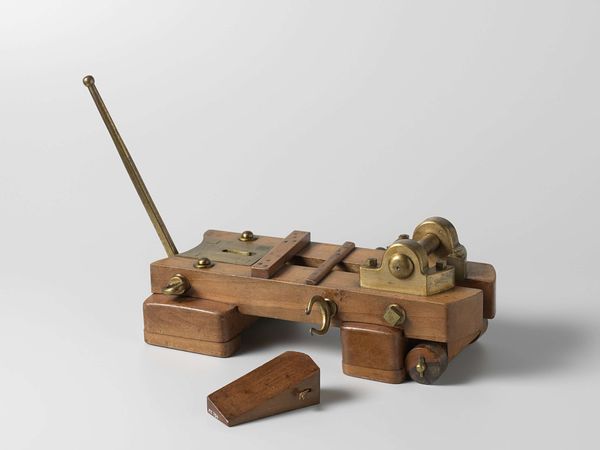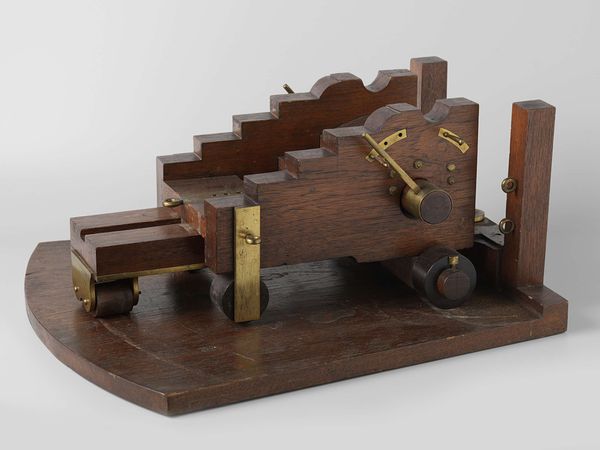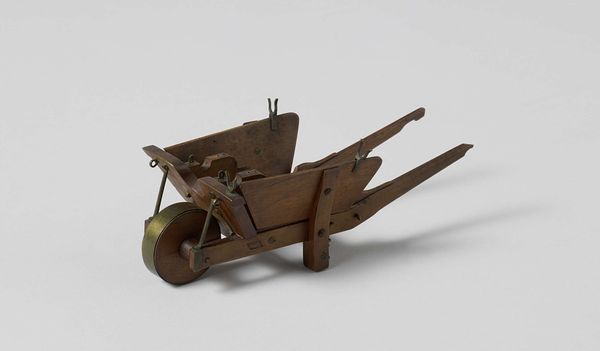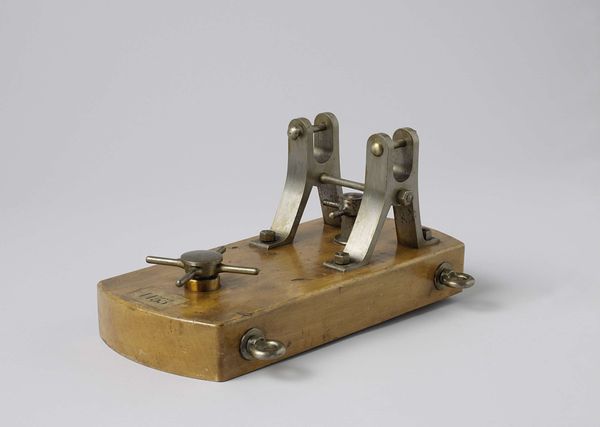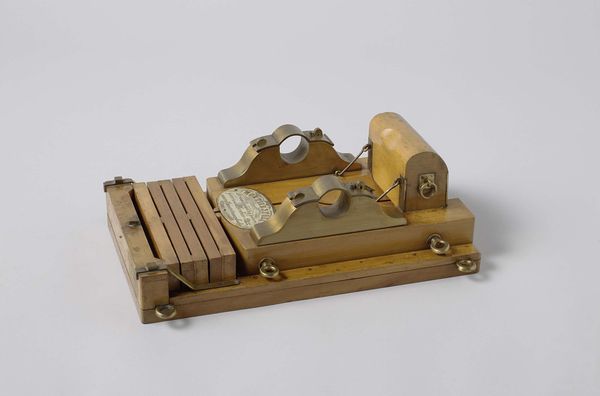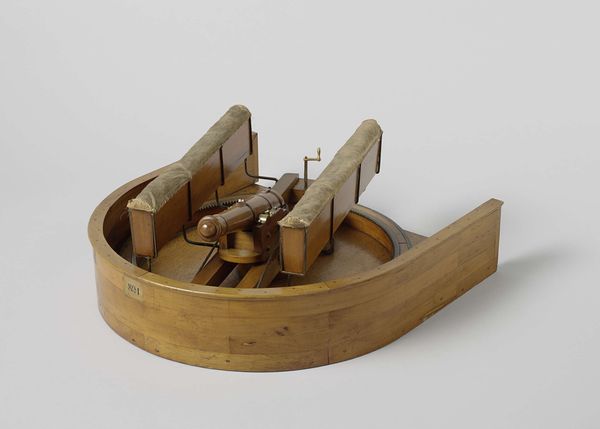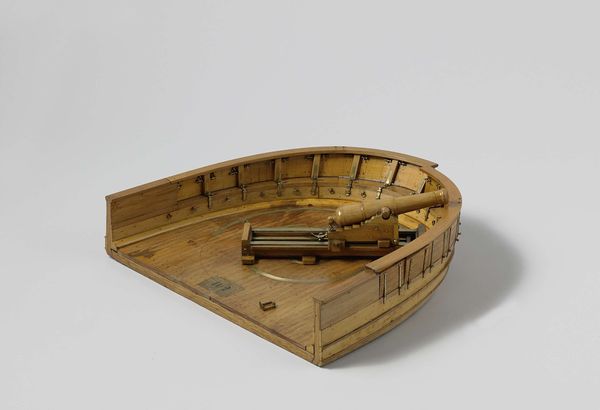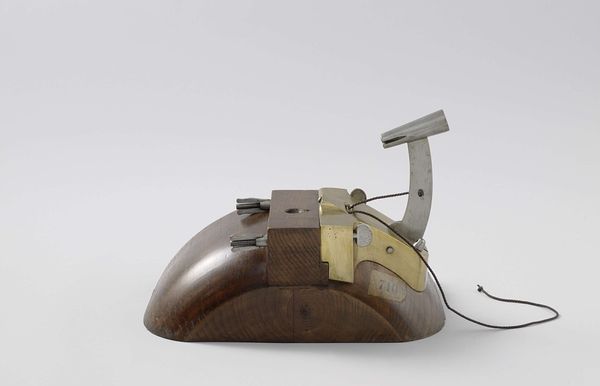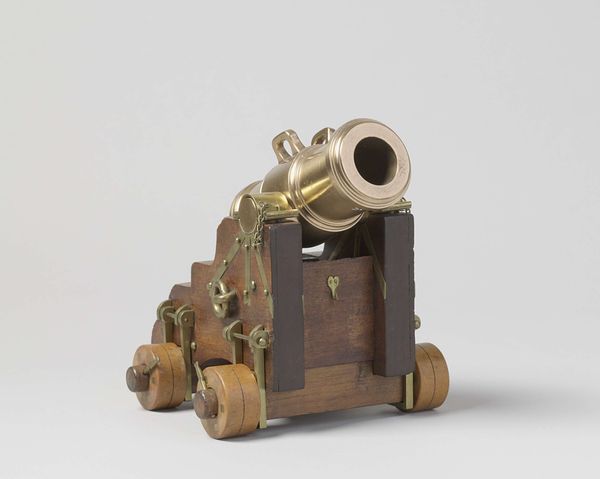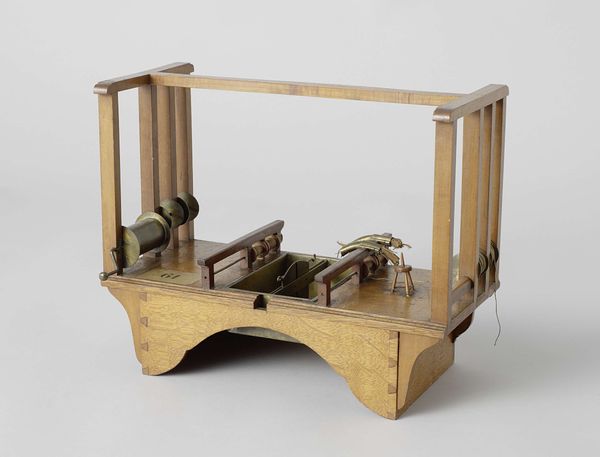
metal, sculpture, wood
#
metal
#
sculpture
#
wood
#
history-painting
Dimensions: height 10.5 cm, width 28 cm, depth 16.5 cm, height 17 cm, width 43 cm, depth 24.5 cm
Copyright: Rijks Museum: Open Domain
Curator: This carefully crafted model, created in 1839 at the Rijkswerf Amsterdam, depicts a carriage designed for a 36-pounder carronade. It's constructed with meticulous detail using both wood and metal. Editor: My first thought? It's surprisingly delicate for something associated with such destructive power. There's almost a jewelry-like quality to the miniature metalwork. Curator: Precisely. The model served as a crucial tool for naval engineers. These weren't mere decorations; they were essential visual aids for understanding and refining the mechanics of large-scale weaponry and ship design. The fact that they survive today speaks to their cultural value as embodiments of this knowledge. Editor: It evokes the immense cultural weight associated with naval power in the 19th century, especially for a nation so reliant on its maritime strength like the Dutch. Do you think the average person at the time would understand it the same way we do today, divorced from the practical purpose of creating actual, operational objects based upon its structure? Curator: That's a fascinating point. For the common citizen, viewing this would likely instill a sense of pride and confidence in their nation's ability to protect its interests and project influence, to instill both awe and possibly also fear. Editor: I agree. It also subtly portrays dominance. Think of all of the images of sea power at the time with mythological trident imagery! This cannon is a type of functional stand-in. Consider the symbolism here, particularly the round shapes that could evoke, unconsciously or otherwise, power, protection, or even simply strength and unity. What's really striking to me are the many bronze pins—like shiny eyes—set uniformly within the honeyed wooden support. It gives it almost an uncanny, purposeful presence. Curator: That level of intricate work on display certainly speaks to a confidence of resources and the ambition for continued dominion. The contrast between the polished wood and gleaming metal elements certainly draws attention to the sophistication of naval military technologies during this era, when they were on the precipice of so much rapid change. Editor: Reflecting upon the model, the contrast between the refined details and its brutal function still makes me contemplate. It feels like such a vivid illustration of that complicated relationship between human innovation, artistic impulse, and political reality. Curator: I think this highlights how material culture, and even the technical representation of destructive force, leaves such a powerful legacy. It remains a stark and compelling reminder of a society navigating expansion, defense, and technological advancement.
Comments
No comments
Be the first to comment and join the conversation on the ultimate creative platform.

